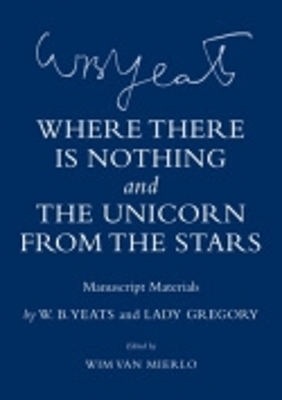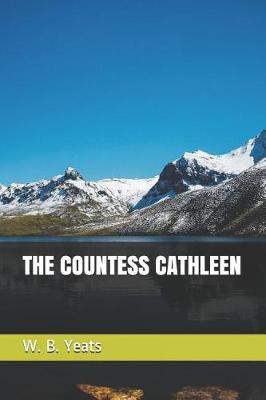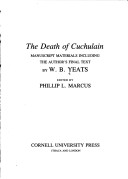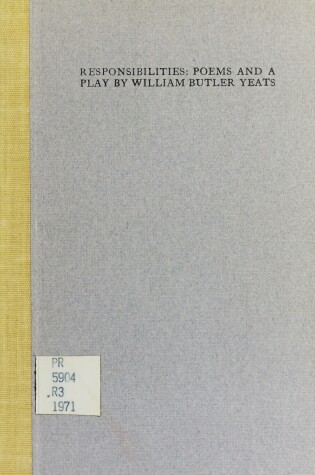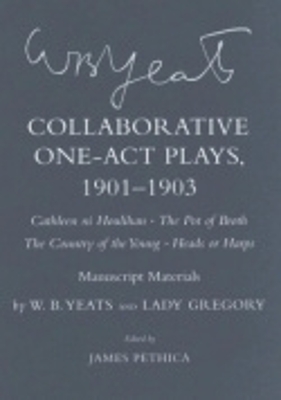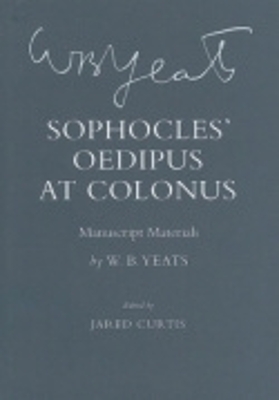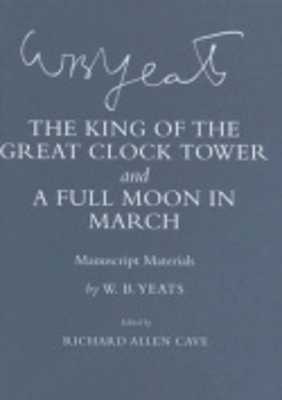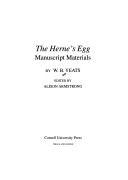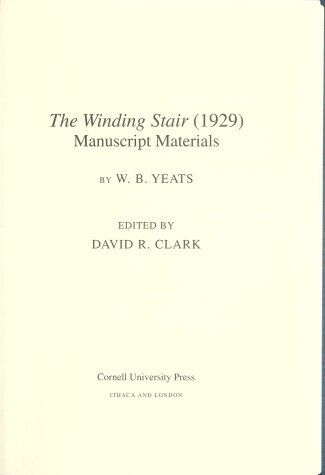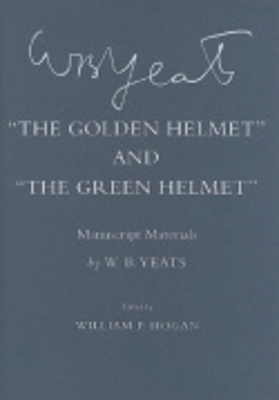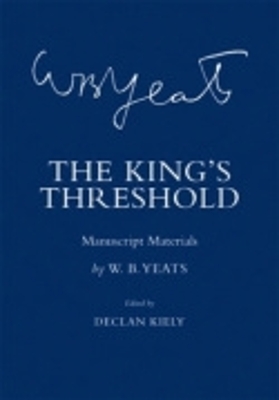The Cornell Yeats
33 total works
"Where There Is Nothing" and "The Unicorn from the Stars"
by W. B. Yeats and Lady Gregory
"The Unicorn from the Stars" (1907) is a thorough reworking of "Where There Is Nothing" (1902), in which Yeats sought to create a "religious Don Quixote," whose spiritual unorthodoxy and rebellion against social conventions climax in a rejection of material existence: "where there is nothing, there is god." Driven by the conflict between the hero’s spiritualism and the dogmas of the church and society at large, "The Unicorn from the Stars" has a mystical force that does not completely relinquish the dramatic realism of "Where There Is Nothing." Through his preoccupation with "passionate" living, the main character rejects the material world, providing Yeats with the opportunity to balance realism and supernatural revelation in a dynamic that became central to his art.
In the Cornell Yeats edition of the two plays, Wim Van Mierlo recounts their complicated composition history and makes clear the ways in which the latter diverges from its predecessor. Van Mierlo clarifies the role of George Moore in the origin of the earlier play’s story line and the dispute between him and Yeats that ensued. Beyond this basic plot, Lady Gregory played an important part in the writing of both plays, especially in characterizations and dialogue of the first play. Insofar as is possible, Van Mierlo unscrambles the process by which she and Yeats worked together and apart to rework the earlier play into the very different "The Unicorn from the Stars." Lady Gregory later expressed her disappointment about the level of credit Yeats was willing to give her for her role. This was the last play they wrote together.
From reviews of The Cornell Yeats series:
"For students of Yeats the whole series is bound to become an essential reference source and a stimulus to important critical re-readings of Yeats's major works. In a wider context, the series will also provide an extraordinary and perhaps unique insight into the creative process of a great artists."-Irish Literary Supplement
"I consider the Cornell Yeats one of the most important scholarly projects of our time."-A. Walton Litz, Princeton University, coeditor of The Collected Poems of William Carols Williams and Personae: The Shorter Poems of Ezra Pound
"The most ambitious of the many important projects in current studies of Yeats and perhaps of modern poetry generally.... The list of both general and series editors, as well as prospective preparers of individual volumes, reads like a Who's Who of Yeats textual studies in North America. Further, the project carries the blessing of Yeats's heirs and bespeaks an ongoing commitment from a major university press.... The series will inevitably engender critical studies based on a more solid footing than those of any other modern poet.... Its volumes will be consulted long after gyres of currently fashionable theory have run on."-Yeats Annual (1983)
Originally published in 1892, The Countess Cathleen aroused fierce controversy when it was first performed in 1899. The play was frequently revived and almost as often revised, becoming at various points in Yeats's career a decisive indicator of his relations with his literary and theatrical public, of his changing conception of dramatic form, and of the status of his pursuit of Maud Gonne, for whom the play was written. This volume in the Cornell Yeats reproduces the complete set of extant manuscripts preceding the play's first publication and reassembles the extensive manuscript, proof, and authorial copy to present a crucial body of evidence of Yeats's work and thought in drama and theater over the course of three decades.
The volume gives literatim transcriptions and photographic reproductions of all the holographic materials pertaining to the writing, revising, and rewriting of The Countess Cathleen from 1889 to 1934. It includes all textual variants from other sources such as typescript, corrected proofs, and prompt copies.
This book makes available for the first time all extant materials relating to Yeats's play Purgatory, from the earliest drafts, which reveal the intensity with which Yeats struggled to perfect his work, to the final text.
From reviews of The Cornell Yeats series:
"For students of Yeats the whole series is bound to become an essential reference source and a stimulus to important critical re-readings of Yeats's major works. In a wider context, the series will also provide an extraordinary and perhaps unique insight into the creative process of a great artists."-Irish Literary Supplement
"I consider the Cornell Yeats one of the most important scholarly projects of our time."-A. Walton Litz, Princeton University, coeditor of The Collected Poems of William Carols Williams and Personae: The Shorter Poems of Ezra Pound
"The most ambitious of the many important projects in current studies of Yeats and perhaps of modern poetry generally.... The list of both general and series editors, as well as prospective preparers of individual volumes, reads like a Who's Who of Yeats textual studies in North America. Further, the project carries the blessing of Yeats's heirs and bespeaks an ongoing commitment from a major university press.... The series will inevitably engender critical studies based on a more solid footing than those of any other modern poet.... Its volumes will be consulted long after gyres of currently fashionable theory have run on."-Yeats Annual (1983)
The Cornell Yeats edition of the poetry collection Responsibilities features the only surviving example of Ezra Pound and the author collaboratively revising a poem by Yeats. Working on a set of page proofs of "The Two Kings"-one of the poems in the volume-while they shared Stone Cottage in Sussex during the winter of 1913-1914, Pound wrote proposed revisions and Yeats then reacted to them, accepting some, changing some, and rejecting some. This process of collaborative revision is a precursor of Pound's more extensive marking, nearly a decade later, of T. S. Eliot's The Waste Land.
Responsibilities is also of particular interest for its inclusion of a group of poems written about the highly public controversy over the attempts to build a Dublin Modern Art Gallery. Yeats wrote a long, detailed note in 1914 to explain the political background of the poems in this volume. The drafts of the note's sometimes caustic phrasing have survived and are included here.
The four short works collected in this book were among the earliest plays to be authored collaboratively by W. B. Yeats and Lady Gregory. Written in the pivotal years during which the "Irish Literary Theatre" experiment of 1899–1901 began to evolve into what would become the Abbey Theatre, they show both writers engaging with questions central to the early Irish dramatic movement: How should "Irishness" be represented on the stage? To what extent should artists engage directly with Nationalist politics? And what role might literature play in the creation of a new Ireland?
The manuscripts presented here chart the evolution of two plays published over Yeats's name: "Cathleen ni Houlihan"—the pair's most successful collaboration, and the work that confirmed Yeats's credentials as a Nationalist writer—and the "peasant" farce "The Pot of Broth." This book also includes manuscript material for "The Country of the Young" and "Heads or Harps," which the writers left unpublished and unproduced during their lifetimes.
Yeats first expressed interest in producing translations of Greek classical plays in March of 1903, in the early days of establishing the Abbey Theatre in Dublin. But not until two decades later did he turn his hand to creating his own versions of Sophocles' Oedipus the King and Oedipus at Colonus. Working from Victorian translations into English and French by classicists R. C. Jebb and Paul Masqueray, he completed Oedipus the King in the fall of 1926 and Oedipus at Colonus a year later.
The second play, like the first, he gave directly to the Abbey players, prompting him to revise and hone his texts through many versions to achieve his stated goal of putting the play "into simple speakable prose" that he hoped would be his "contribution to the Abbey Repertory." The play had a successful run in September of 1927 but was not published until 1934.
This edition presents photographs and transcriptions of three revised typescripts of Oedipus at Colonus that Yeats prepared and extensively revised over a period of eight-and-a-half months and a reading text based on the first publication of the play, which is presented with an apparatus of collations from the many proofs for three different intended publications. Included also are photographs and transcriptions of the verse choruses, except for the two appearing in The Tower (1928), also part of the Cornell Yeats; an appendix of other typescripts and proofs that invite detailed treatment; and a brief account of the music written for the play by Lennox Robinson, who was also its first director. The texts are prefaced by a census of manuscripts, an introduction discussing Yeats's development of the play, and a chronology of composition.
The King of the Great Clock Tower" and "A Full Moon in March"
by W. B. Yeats
"It takes years to get my plays right." So Yeats informed Margot Ruddock on October 11, 1934, from Rome, where he had begun to redraft The King of the Great Clock Tower to give her a role to act. In June of that year Yeats had begun to rewrite his first prose version of the play before it had even been staged (it was performed most successfully at the Abbey Theatre from July 30 that summer). Two versions of The King of the Great Clock Tower (one in prose and one in verse) and a new play, A Full Moon in March, derived from the first, were to emerge from a period of gestation that had started early in November 1933.
The composition of each play was fueled by Yeats's intense feeling for a woman. Both were performers: Ninette de Valois elected only to dance on stage and not to speak; Margot Ruddock was an actress possessed of a rich contralto voice who preferred not to dance (despite Yeats's most enduring description of her as his "sweet dancer"). Yeats devised strategies for each of his dance plays to meet these prescriptions. While admiration for de Valois's artistry helped to shape the first play, the second for Ruddock was the product of a deepening personal infatuation. The structure and content of the two plays and the differences between them reflect the wholly different emotions that stimulated their creation.
This volume of the Cornell Yeats contains manuscript materials for both the prose and verse renditions of The King of the Great Clock Tower and all of the drafts that resulted in A Full Moon in March. It also includes drafts of Yeats's prefaces and program notes for the plays, as well as staging information and cast photographs of the production of The King of the Great Clock Tower at the Abbey.
Written during a period of illness in 1935–1936, Yeats's play combines frank sexual content with bizarre imagery from the Indian and tribal Irish traditions. This edition provides a full transcription of the only extant manuscript version of the play.
In 1929, W. B. Yeats published a collection of poems titled The Winding Stair. Four plays later he combined this collection with his 1932 work, Words for Music Perhaps, to form The Winding Stair and Other Poems. The Cornell Yeats edition of The Winding Stair brings together transcriptions of all extant manuscript materials for the six poems included in the 1929 volume.
From reviews of The Cornell Yeats series:
"For students of Yeats the whole series is bound to become an essential reference source and a stimulus to important critical re-readings of Yeats's major works. In a wider context, the series will also provide an extraordinary and perhaps unique insight into the creative process of a great artists."—Irish Literary Supplement
"I consider the Cornell Yeats one of the most important scholarly projects of our time."—A. Walton Litz, Princeton University, coeditor of The Collected Poems of William Carols Williams and Personae: The Shorter Poems of Ezra Pound
"The most ambitious of the many important projects in current studies of Yeats and perhaps of modern poetry generally.... The list of both general and series editors, as well as prospective preparers of individual volumes, reads like a Who's Who of Yeats textual studies in North America. Further, the project carries the blessing of Yeats's heirs and bespeaks an ongoing commitment from a major university press.... The series will inevitably engender critical studies based on a more solid footing than those of any other modern poet.... Its volumes will be consulted long after gyres of currently fashionable theory have run on."—Yeats Annual (1983)
William Butler Yeats's Helmet plays (The Green Helmet, in verse, and its earlier prose version The Golden Helmet) are part of the author's cycle of plays dealing with the life and death of the legendary Irish hero Cuchulain. First conceived in 1907, in the aftermath of the riots at the Abbey Theatre over J. M. Synge's Playboy of the Western World, the Helmet plays were written at a crucial turning point in Yeats's early career: politically, his disillusionment with Irish cultural nationalism was growing; professionally, he was beginning to separate himself in bitterness from the day-to-day operation of the Abbey; and aesthetically, he was continuing to incorporate his interest in the Japanese Noh tradition into his own dramatic vision. All of these developments in Yeats's life and work are visible in the Helmet plays.
This Cornell Yeats volume traces the evolution of the Helmet plays from the first versions of The Golden Helmet, published in prose in 1908, to the revision into verse in The Green Helmet, which appeared in 1910. All of the existing manuscript materials for the play—including the author's autograph manuscripts, revised proofs, and printed editions marked in the author's hand—are either reproduced photographically or transcribed in this scholarly edition. The edition also includes a census of the manuscripts, editor's notes, and an introduction outlining the history of the play's composition, production, and publication. This edition makes visible the complex evolution of these texts during pivotal years in Yeats's career.
From reviews of The Cornell Yeats series:
"For students of Yeats the whole series is bound to become an essential reference source and a stimulus to important critical re-readings of Yeats's major works. In a wider context, the series will also provide an extraordinary and perhaps unique insight into the creative process of a great artists."—Irish Literary Supplement
"I consider the Cornell Yeats one of the most important scholarly projects of our time."—A. Walton Litz, Princeton University, coeditor of The Collected Poems of William Carols Williams and Personae: The Shorter Poems of Ezra Pound
"The most ambitious of the many important projects in current studies of Yeats and perhaps of modern poetry generally.... The list of both general and series editors, as well as prospective preparers of individual volumes, reads like a Who's Who of Yeats textual studies in North America. Further, the project carries the blessing of Yeats's heirs and bespeaks an ongoing commitment from a major university press.... The series will inevitably engender critical studies based on a more solid footing than those of any other modern poet.... Its volumes will be consulted long after gyres of currently fashionable theory have run on."—Yeats Annual (1983)
He has chosen death:
Refusing to eat or drink, that he may bring
Disgrace upon me; for there is a custom,
An old and foolish custom, that if a man
Be wronged, or think that he is wronged, and starve
Upon another's threshold till he die,
The common people, for all time to come,
Will raise a heavy cry against that threshold,
Even though it be the King's.
—from The King's Threshold
The King's Threshold was first performed in Dublin by the Irish National Theatre Society in 1903 and first published in New York in 1904. The Cornell Yeats edition of this play about a bard's hunger strike includes the preliminary notes and first prose drafts dictated by Yeats to his patron and collaborator, Lady Gregory, in March and April 1903. As well as providing an outline of the play, these preliminary notes identify contemporary persons on whom some of the characters were based. Other features of this edition of The King's Threshold include Yeats's first blank verse drafts, heavily revised and corrected typescripts and galley proofs, and notes for the changes made between 1904 and 1906. A major revision added a tragic ending to the version published in 1922, and this ending has remained in place ever since. Uniquely, this edition presents all four versions of the play, spanning thirty years of Yeats's efforts to perfect it. Declan Kiely presents the biographical and historical context of the play's genesis and Yeats's revisions, and gives accounts of several productions and revivals of the play. The Introduction also explores the relationship between theatrical production and textual revision.
From reviews of The Cornell Yeats series:
"For students of Yeats the whole series is bound to become an essential reference source and a stimulus to important critical re-readings of Yeats's major works. In a wider context, the series will also provide an extraordinary and perhaps unique insight into the creative process of a great artist."—Irish Literary Supplement
"I consider the Cornell Yeats one of the most important scholarly projects of our time."—A. Walton Litz, Princeton University, coeditor of The Collected Poems of William Carols Williams and Personae: The Shorter Poems of Ezra Pound
"The most ambitious of the many important projects in current studies of Yeats and perhaps of modern poetry generally.... The list of both general and series editors, as well as prospective preparers of individual volumes, reads like a Who's Who of Yeats textual studies in North America. Further, the project carries the blessing of Yeats's heirs and bespeaks an ongoing commitment from a major university press.... The series will inevitably engender critical studies based on a more solid footing than those of any other modern poet.... Its volumes will be consulted long after gyres of currently fashionable theory have run on."—Yeats Annual (1983)
W. B. Yeats's The Tower, first published in 1928 and later revised a number of times, arrived in its final form after many years of dedicated labor. Yeats here is concerned with the "rooting of mythology in the earth," binding almost every poem to the image of Thoor Ballylee, the building in the west of Ireland that he saw as a permanent symbol of his work. Still considered one of the seminal volumes of modern poetry, its themes are both intensely personal and determinedly universal: old age and its attendant problems, the relationship between Nature and Art, the natural and the supernatural or spiritual, the self and the world. In her unsigned review of the collection, Virginia Woolf was to declare, "Mr Yeats has never written more exactly and more passionately."
Yet the poet was never satisfied, and in this volume we can trace the alterations, some subtle and others startling, of the hard-earned technique resulting in such major works as "Sailing to Byzantium," "Among School Children," "Leda and the Swan," and "Meditations in Time of Civil War." Materials include transcriptions and photographs of the earliest recoverable drafts and selected transcriptions from the most interesting manuscripts and annotated typescripts. Collations of closely related materials, including printed readings preceding the 1928 volume, are attached to transcriptions of the texts to which they lead or from which they stem. Appendixes reveal the different ordering of titles in The Tower that Yeats provided both before and after 1928.
